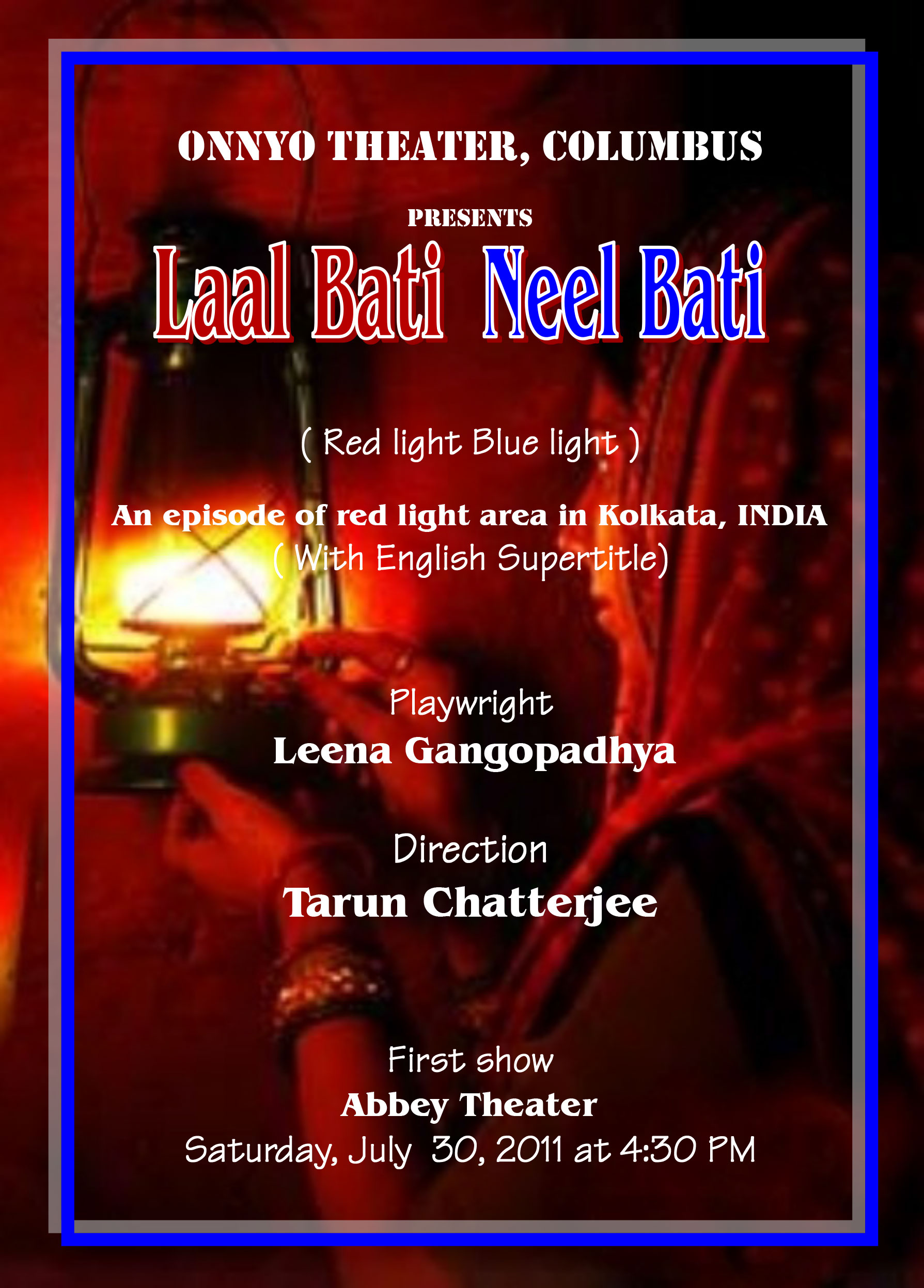লাল বাতি নীল বাতি
“An episode of Red Light Area”
By
Leena Gangopadhyay
“To strive, to seek, to find, and not to yield.”
Bini, in Leena Gangopadhyay’s Laal Baati, Neel Baati, fostered this same will to live and a resilience against all the cruelties thrust upon her. She felt blessed with the life she had and wanted to live it to the fullest. But, that was not to be! Be it the NGO or the law, or the pimp or the villains in the red light areas, all were set on undoing her and stifling her zest for life. Bini was, after all, a prostitute.
All her inmates like Ranu, Lata, Swapna, Maju are helpless victims of social ruthlessness. Society ravishes their innocence, uses their beauty, and finally disposes them off as animal entrails. Their individualities are reduced to voiceless objects! It does not matter to anyone (except to a few humane characters like Palash) that they are also women with love and hope lurking behind their inner mysteries.
This play is a dramatic presentation of the lives of these women who incur nothing but hatred from the rest of society. The dehumanization at work unleashes such perturbations that we are left to redefine the boundaries between “civilization” and “savagery.” The so-called civilized society is simply devoured by its avarice for money. It is stripped of all empathy, honesty, and humanity.
This moral murkiness is too real to bear. Some of the honest NGO workers like Palash, Jhalmal and Neepa are merely puppets of a political game. They are unvoiced by their corrupt colleagues. The truth behind the genial facades of Goutam, Mamtaz, Sandip, and Kalyan shakes the very foundations on which humanity thrives. The irony is that the hapless are always choked in misery and evil flourishes unchecked. Even if the ugly truth is unmasked, it does not make a difference to these shameless players of a dangerous, dark game. Who is the real prostitute? The women who are forced to live by selling their bodies, or the polite society that prostitutes its conscience for money?









































































































































































